A Foolproof Guide to Making Prime Rib for the First Time
Prime rib is one of those celebratory dishes that hearkens to a simpler time. For many of us, childhood memories are punctuated by dinner parties sneakily witnessed through bannister spindles when we were supposed to be sleeping. Watching our parents become brighter, buzzier versions of themselves, the clink of ice cubes in cocktail glasses, and the presentation of the roast. Or holiday celebrations where, at the end of the table, the chosen carver, armed with an electric knife, served the well-browned beast to the gathered revelers.
For the generations that came before, this majestic mountain of meat was the pinnacle of both dining in and dining out. But as the ‘80s brought with them the anti-red-meat health campaigns, the home-cooked prime rib roast went by the wayside as the centerpiece dish for entertaining in favor of chicken and pork dishes. And as such, there are now two generations who did not learn, as I did, to cook a prime rib roast by feel and smell at their grandmothers’ knee.
Get the recipe: Classic Prime Rib
But this is an easy, if not inexpensive, way to feed a crowd, and it isn’t as daunting as you think. So, having a great prime rib in your culinary toolkit is completely worth it. There is still something gloriously abundant, if just shy of Dionysian, about a giant roast beef, making your guests feel special and pampered.
Successful prime rib is all about technique, and there are many out there. Some take several days to prep, salting and aging the roast in the fridge, searing, smoking, grilling—all great if you are a prime rib cooker from way back and are seeking your person prime rib perfection. This is not that article. This story is for the cook who is planning their partner’s big upcoming birthday celebration, or is going to be hosting Christmas for the first time, or has a meat and potatoes-loving father-in-law visiting and has no idea how to make prime rib.
Prime rib is an indulgence and an expensive piece of meat, and you definitely don’t want to cook it badly. This technique is very forgiving, and slow, so you don’t risk ruining the dinner in a moment of forgetfulness. And once you make it once, you’ll see why it is so storied and why so many people have such fond memories of meals with it as the centerpiece.
The roast
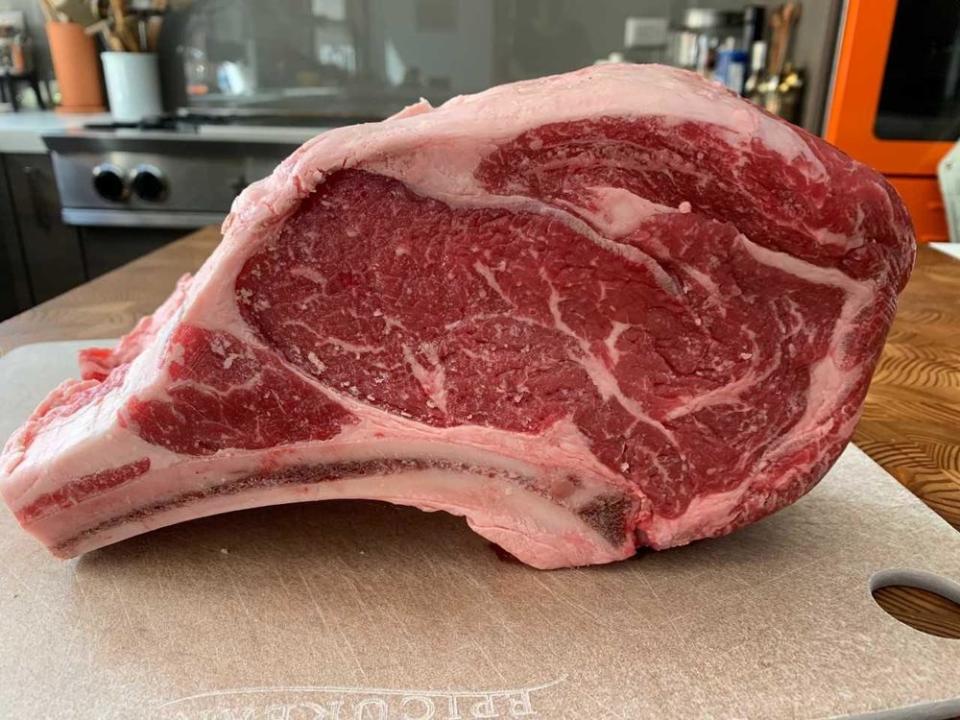
If possible, order your roast in advance from a butcher. Ideally, for modern tastes and appetites, you will want roughly ¾ of a pound per person you are serving. So, a 5-pound, two-rib roast will serve 6 people, and a 10-pound four-rib roast will serve a dozen. If you are not cooking a “whole” prime rib, which is a seven-rib monster often weighing close to 20 pounds, ask your butcher for the cut near the loin end, where the eye of the roast is larger, with less of a thick swath of fat, so you get more actual meat in each portion. Ask the butcher to remove the whole roast from the bones, but to give you the bones in one piece. You can do this yourself if you are skilled with a knife, but be careful, it is a heavy piece of meat and can get slippery. A two-rib roast is easily managed at home, anything larger is better done by a professional.
Prepping the meat
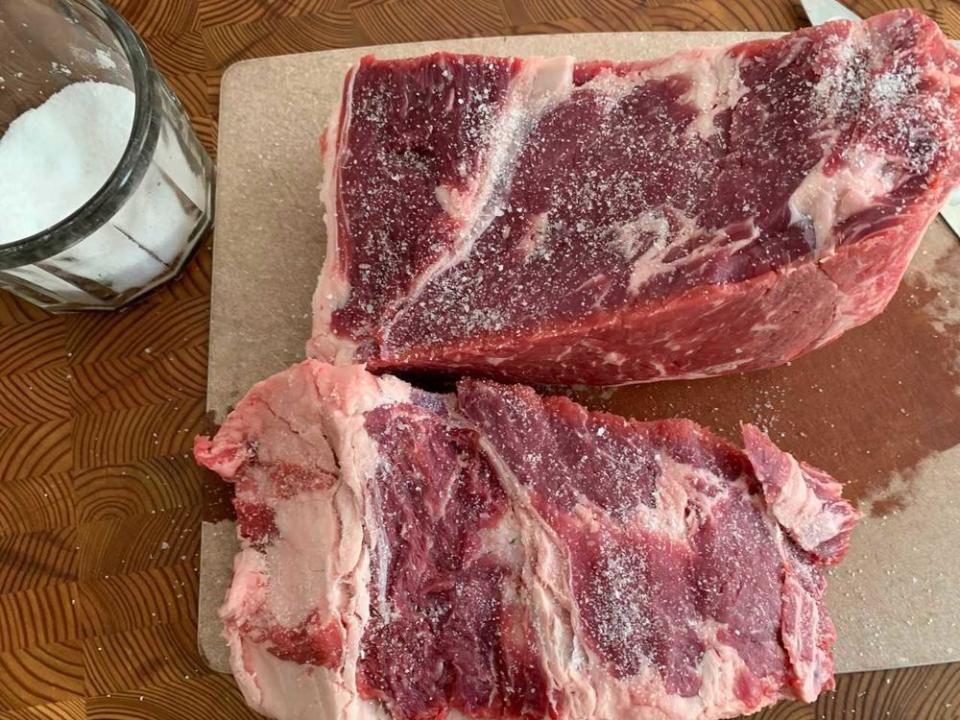
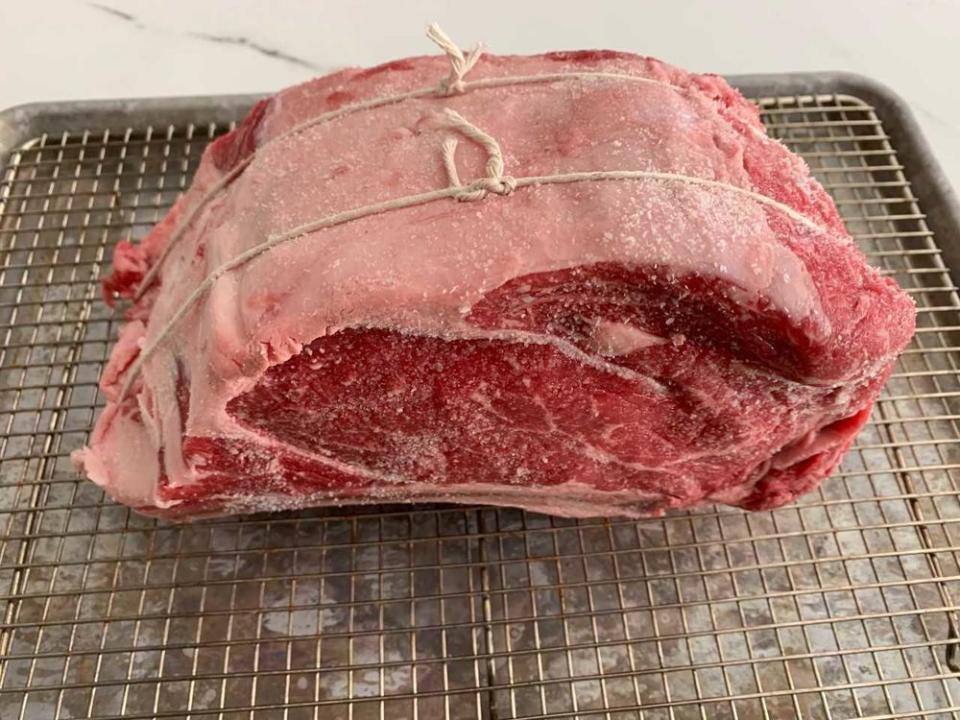
Salting ahead of time can be great, but not everyone has the ability to plan that far ahead, or the fridge space to accommodate a giant uncovered piece of salted meat for three days. So I salt two hours before I intend to start cooking, and leave the salted meat at room temp, uncovered, in a cool corner, where it also will get the chill of the fridge off it before I put it in the oven. I salt the roast generously all over, and the bones, then place the roast back on the bones and tie it together with cooking twine, one tie per rib. This will hold the roast in place on the bones, where it will get all the benefits of bone-in cooking, but means that when it is carving time, you will be able to easily separate them and not have to wrestle with it. If you have the fridge space and the inclination, you can do this up to three days in advance, and store uncovered on a rack over a sheet pan. Otherwise, two hours ahead is fine, don’t make yourself crazy about it.
Low and slow
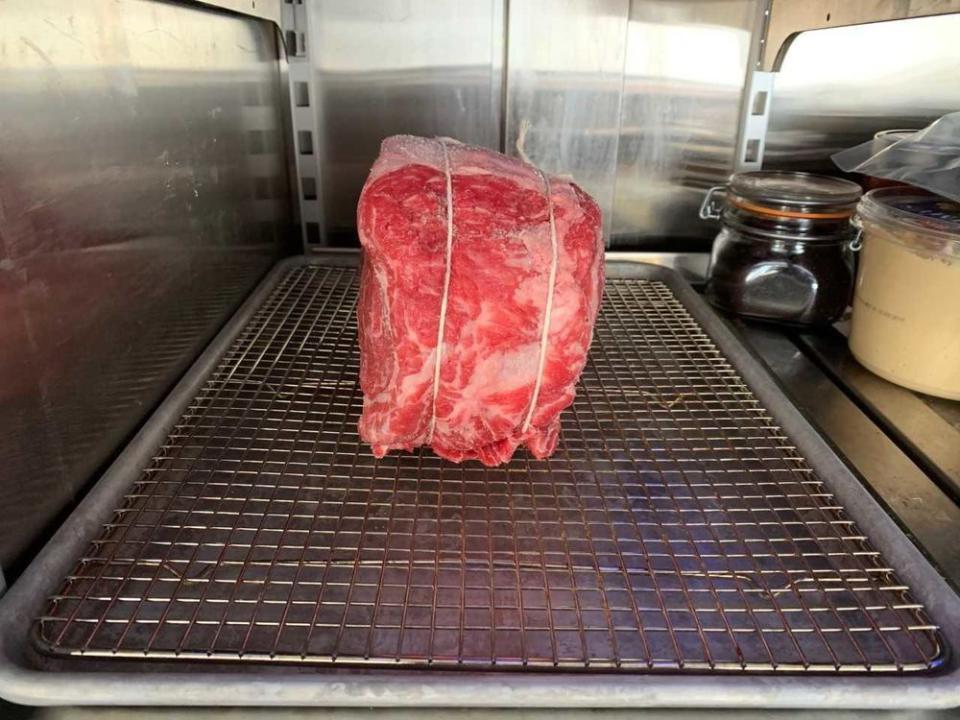
This method is forgiving because it is so slow. You are going to set your oven to its lowest temperature, for most home ovens this will be between anywhere from 150-200. Depending on how low your temp goes, and the size of your roast, I would allow between 3 ½ hours at 200 to 6 ½ hours for 150 for up to three ribs, and add a half an hour per rib after that, to get you to a medium rare of 130 internally. If you want it rarer, shoot for 125 and start checking temp earlier, if you want it closer to medium at 135, it might go a little longer. When the center of the roast hits your temp, be sure your thermometer is in both the middle of the roast both latitudinally and longitudinally, remove it from the oven and tent with foil and let rest for at least 30 minutes, but up to 90. The good news is that while you can and should attempt to time this to your desired dining time, this is, as I have said, a very forgiving method, so if your meat is temped properly well before your guests arrive, do not worry. Leave it tented with foil, and if needed, you can rewarm it in a 200 oven for up to 45 minutes before the final step.
Read more: How to Cook Prime Rib to a Perfectly Juicy Medium Rare
A blast of heat to finish
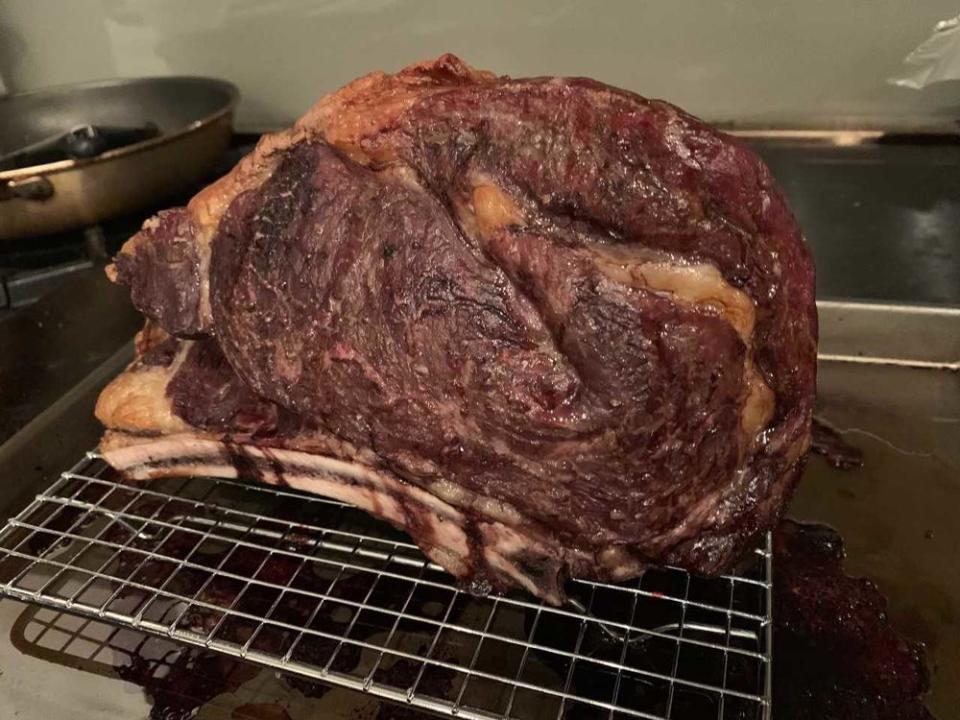
About 30 minutes before you want to serve the roast, crank your oven as hot as it will go, usually 500. You are going to finish the roast in this hot oven for just about 8-10 minutes, right before serving, to brown it and crisp the fat cap. Since the meat has been resting for plenty of time, you do not need to rest it again after you brown it, you can slice right away.
Slice and serve
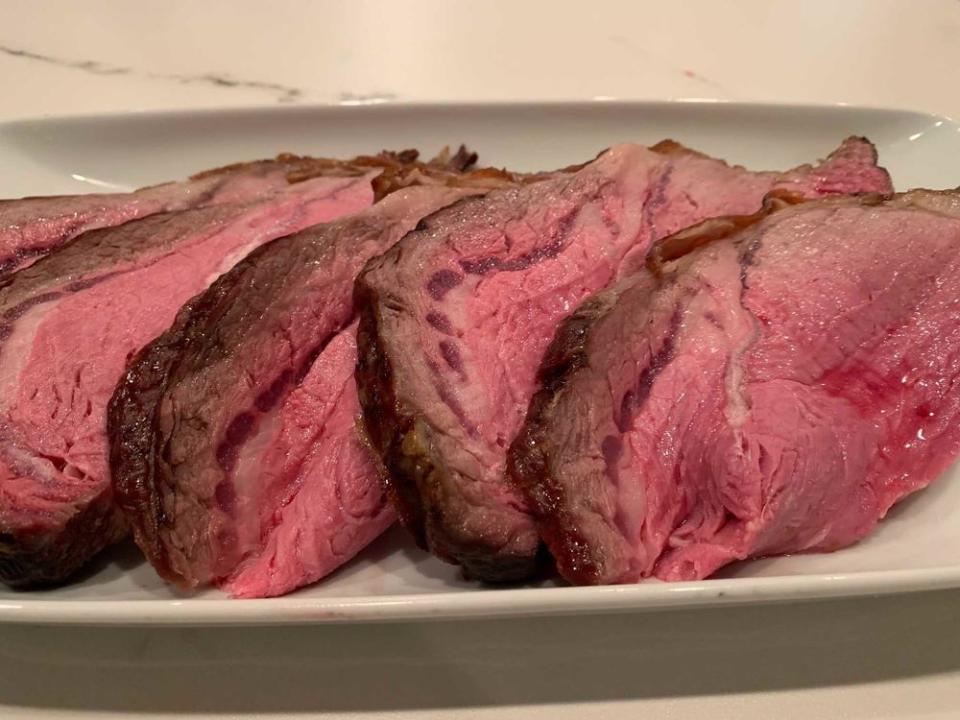
Start by cutting and removing the strings holding your roast on its bones, and then remove the roast from the bones and onto a large cutting board. You can either separate the bones and serve or keep them for yourself to gorge on tomorrow. An electric knife is nice to use to carve this roast, but if you don’t have one, a large very sharp knife and a carving fork will do. For me, I do not want to serve my guests enormous slabs of meat. I’ve done it, and it nearly killed me to watch almost every plate come to the kitchen half-finished. You’ve likely had a cocktail hour with nibbles, and probably some sort of salad or starter, or even both, so no one needs a first serving that is an inch and a half thick. I prefer the British style of roast carving, slices that are about a third of an inch thick, so that instead of huge steaks you have luxurious thinner slices that drape and fold on the plate like Turkish towels. Meat sliced this way is easier to serve, and I think the flavor comes out more distinctly. Hungry people can always go back for seconds.
Jus or gravy
The one this this method does not give you, because you cook so gently and at such a low temperature, is anything in the pan to make a jus or gravy with. Don’t @ me, all those juices are still in your roast making it delicious, so no complaining. And I think this style of meat is better served with either a classic horseradish sauce, or a more contemporary condiment of a punchy salsa verde or chimichurri, all of which can be made ahead. If you are insistent on a jus of some kind, simply make it ahead with homemade or store-bought beef stock.

